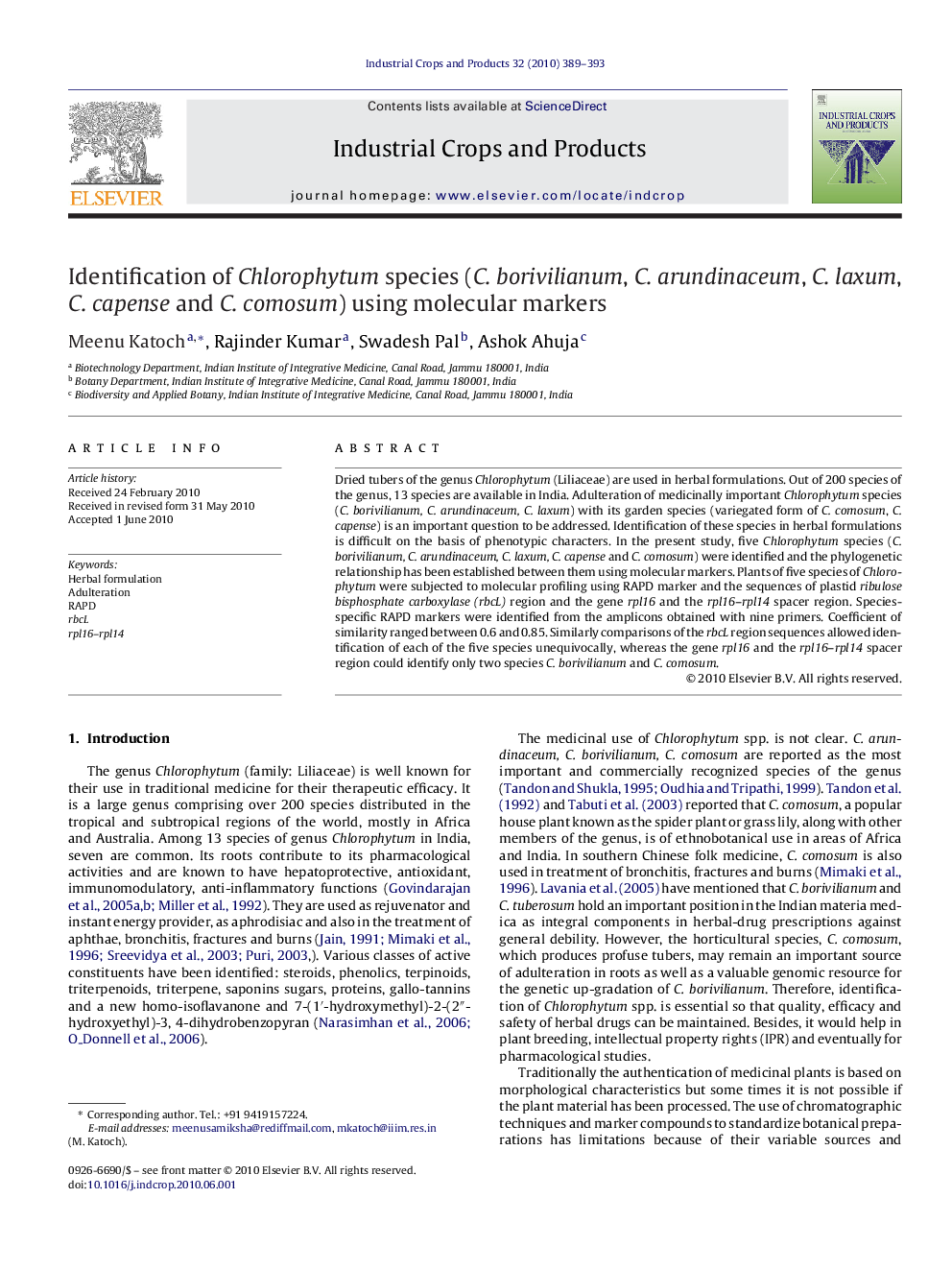| Article ID | Journal | Published Year | Pages | File Type |
|---|---|---|---|---|
| 4514723 | Industrial Crops and Products | 2010 | 5 Pages |
Dried tubers of the genus Chlorophytum (Liliaceae) are used in herbal formulations. Out of 200 species of the genus, 13 species are available in India. Adulteration of medicinally important Chlorophytum species (C. borivilianum, C. arundinaceum, C. laxum) with its garden species (variegated form of C. comosum, C. capense) is an important question to be addressed. Identification of these species in herbal formulations is difficult on the basis of phenotypic characters. In the present study, five Chlorophytum species (C. borivilianum, C. arundinaceum, C. laxum, C. capense and C. comosum) were identified and the phylogenetic relationship has been established between them using molecular markers. Plants of five species of Chlorophytum were subjected to molecular profiling using RAPD marker and the sequences of plastid ribulose bisphosphate carboxylase (rbcL) region and the gene rpl16 and the rpl16–rpl14 spacer region. Species-specific RAPD markers were identified from the amplicons obtained with nine primers. Coefficient of similarity ranged between 0.6 and 0.85. Similarly comparisons of the rbcL region sequences allowed identification of each of the five species unequivocally, whereas the gene rpl16 and the rpl16–rpl14 spacer region could identify only two species C. borivilianum and C. comosum.
